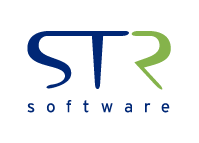 During our webinar series on the evolution of asset management, we touched on the topic of “work order integrity,” in other words, the completeness of a work order and its impact on asset management as a whole. We learned that ensuring that a work order is complete and reliable is important for two reasons: efficiency and program reliability.
During our webinar series on the evolution of asset management, we touched on the topic of “work order integrity,” in other words, the completeness of a work order and its impact on asset management as a whole. We learned that ensuring that a work order is complete and reliable is important for two reasons: efficiency and program reliability.
The first seems self-evident: Maintaining complete and accurate work orders ensures the effective and efficient use of skilled laborers’ time. If the work order package has all of the proper instructions, diagrams, parts information, etc. then valuable tradesmen are able to get to work quickly, check off the necessary tasks, and move on. They are not wasting time coming back to the scheduler looking for the correct documentation or worse, stranded in the field unable to complete the task at hand.
Related: Print Work Orders with Attachments Automatically! Learn More
The second reason to strive for complete and reliable work orders is that doing so has implications for the adoption of a proactive maintenance program. When an organization is striving for best-in-class reliability, users must trust and adopt the tools and systems provided to them. A system that exists for its own sake, rather than to add value to the end users’ lives, is the fastest way to turn off even the most enthusiastic supporters. As the primary interface between the planning system and the tradesperson, the work order package is critical to the maintenance of the asset and also conveys the value of the reliability program in itself. In other words, if the work orders are poorly constructed, missing information, and slowing down progress, the system itself appears – and likely is – broken. Users are more apt to adopt and maintain critical data integration processes if they are starting with a good, working system; it makes their job easier and adds value for them personally.
Related: 5 Tried-and-True Tips for Improving CMMS User Adoption
So then, how do we maintain work order integrity?
First things first, the work that goes into your Computerized Maintenance Management System (CMMS) must be the right work! During the webinar, our host gave an example of Preventive Maintenance (PM) instructions that came directly from the OEM and had been inserted into his work order that simply read “PM the machine.” What?! Although this is an extreme example, those instructions didn’t make his job easier nor help the organization ensure the reliability of that asset. Getting the right work into the system is so critical that OMCS International has entire programs around “PM Optimization” and it is a proven game changer for folks who go down that path.
The second way to maintain the integrity of the work order is to make sure that the right work is getting out of the CMMS. Where humans and computers interact, there is always room for error. The best outcome is to automate as much as possible and eliminate opportunities for such errors. For example, an automated work order printing solution makes it possible to:
- control where a work order’s attachments are stored on the system (version control)
- control how/where attachments are included with the work order (process standardization)
- eliminate manual opening of attachments and collating on the printer – two areas where something critical could get missed.
Users of Maximo and SAP have automated work order printing functionality baked into their systems. Unfortunately, users of Oracle’s eAM module or JDE’s CAM for asset management are missing this critical component of their work order creation and distribution process, making it low hanging fruit with a potentially huge impact.
STR Software believes that complete and reliable work orders should not be a “nice-to-have” feature of your maintenance program. Instead, they are critical to the adoption of optimized maintenance and reliability systems. As mentioned, PMO and other auditing techniques can help ensure the quality of the data going into the system. Making sure the tools you have in place are working for you to help you achieve your goals is the other part of the equation.
In your experience, what impact does work order integrity, or lack thereof, play in ensuring asset reliability?
For folks using Oracle eAM or JDE CAM to manage assets, a work order printing solution can add tremendous value by simplifying the printing and distribution of work order packages, helping to ensure that the right work is getting to the right people, at the right time. Click here to learn more.
For more information:

![Rollup of Product Updates [Spring 2024; v24.1]](https://www.strsoftware.com/wp-content/uploads/2023/02/Feature_Image_ProductUpdate_Wave-510x382.png)

